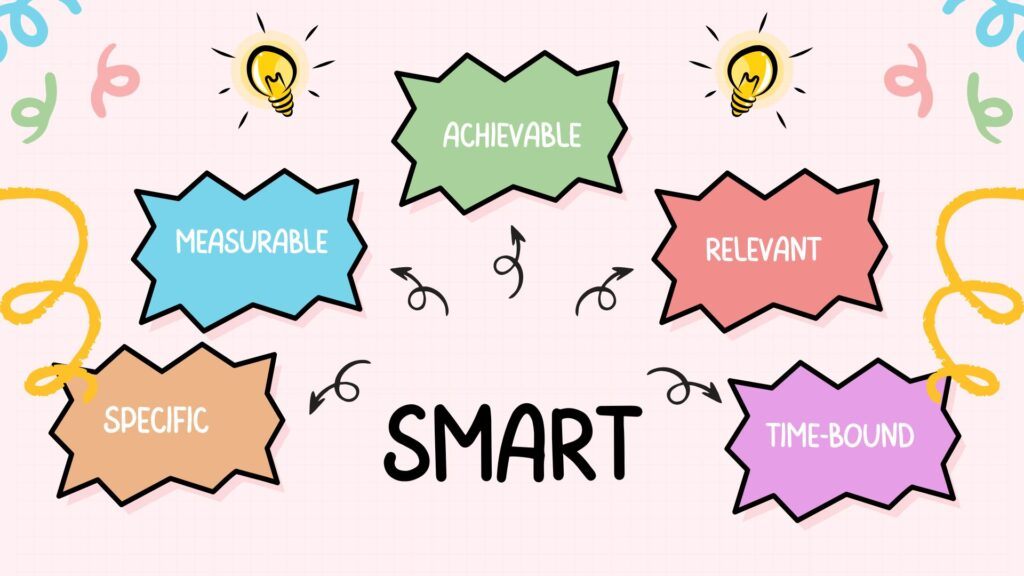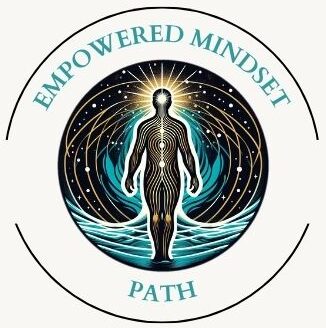
Ever feel like you’re hustling hard but still not getting to where you want? A personal development plan might just be what you’re missing. Picture it as your life’s GPS. Without it, you might end up driving aimlessly, even while feeling busy.
Essentially, a personal development plan is a strategic blueprint for your life goals. You know all those dreams and aspirations you’ve got pinned up on your vision board? This plan takes those ideas from dreams to reality by offering you a real path forward.
Here’s the deal: success doesn’t just happen by accident. It’s crafted with intention, focus, and yes, a solid plan. You’ll find yourself with clearer priorities, more structured days, and feeling way less overwhelmed.
So, what’s in store? By following this guide, you’re not just putting pen to paper. You’re setting a foundation for long-term success. I’m here to help you create something actionable that won’t just sit gathering dust. Let’s turn goals into jobs well done!
Step 1: Define Your Vision – Chart Your Course
Taking the first step to define your vision is like setting a course with a map in hand. Knowing where you want to end up makes every decision and step easier to plan. When you lack direction, every road seems equally inviting.
Your vision acts as a personal compass, guiding you through the exciting and not-so-exciting parts of life. It’s about picturing what you truly want—the ideal life where your values, passions, and dreams mesh perfectly.
Reflect on what matters most. What drives you? What kind of legacy do you want to leave behind? How do you imagine your career, relationships, and personal growth aligning with your values? This is the time to dream big, without limitations.

Once you’ve done some soul-searching, it’s time to write it down. Craft your personal vision statement. This isn’t just some motivational mumbo-jumbo; it’s a tangible statement capturing your deepest desires and long-term goals.
By clarifying your vision, you’re setting yourself up with clearer paths and sharper focuses. Consider this your ultimate life’s mission statement, there to guide you as you turn those dreams into plans.
Step 2: Assess Your Current Position – Know Your Starting Line

Knowing where you stand is crucial before embarking on any journey. Ever try navigating with an outdated map? Not fun, right? Understanding your present helps track progress and identify gaps in your journey towards personal growth.
Think of this step as a self-check-in. It’s about taking an honest look at the various facets of your life—mindset, health, relationships, career, finances, and emotional well-being. These areas paint an overall picture of your current reality.
Start by identifying your strengths and the parts of life that might need a bit more attention. What are you nailing right now? Where do you feel a bit stuck? This reflective practice is both empowering and enlightening.
One effective tool to guide this process is the personal growth wheel. Picture a circle divided into slices representing different areas of your life. Rate each from 1 to 10. This visual gives a concrete sense of which areas are balanced and which need work.
Armed with this clarity, you’re not just leaning on vague impressions. You’ve got a solid baseline to build from, highlighting what truly needs change and what’s already thriving. This makes setting the right focus much simpler as you progress.
Step 3: SMART Goals – Craft a Roadmap to Success
Setting goals without direction is like trying to catch smoke—vague and elusive. This is where SMART goals step in, turning wishful thinking into actionable plans. They’re your guiding stars, lighting up the path from desire to reality.

SMART stands for Specific, Measurable, Achievable, Relevant, and Time-Bound. Each part ensures that your goals are clear and reachable, which makes them much more than hopeful dreams. Instead of just saying, ‘I want to be fit,’ you’d target, ‘I will join a gym by next week and workout every Monday, Wednesday, and Friday.’
Creating SMART goals lets you skip the frustration of unclear targets. When your objectives are well-defined, it’s easier to plan the steps needed to achieve them. It also keeps you accountable, moving away from ‘someday’ to a planned timeline.
Start by picking 3-5 vital goals you want to achieve—goals that fire you up. Then, break them down using the SMART formula. This way, each step you take will have purpose, direction, and motivation, keeping you on track no matter what.
It’s not just about checking boxes. It’s about crafting a future with purpose, where each goal stretches you towards the vision you so carefully crafted. It’s turning aspiration into daily action with tangible outcomes.
Step 4: Action Plans – Blueprint for Daily Triumphs
Goals without solid plans are just daydreams. They need action steps to transform from ideas to reality. Creating an action plan ensures you focus steadily on achieving each goal, turning dreams into actionable tasks.
Think about your big goals as mountains to climb. They can look daunting, but when broken down into daily tasks, it turns the huge undertaking into small, doable steps. Identify what you need to do weekly or monthly, step by step, and those mountains become hillocks.
Building and fine-tuning daily routines is crucial. You set yourself up for success by forming habits that support your growth. Maybe your goal is to learn a new language—integrating small daily practices like 15-minute vocabulary sessions makes the bigger goal more manageable.
Tools like planners, habit trackers, or digital apps become your helpful companions here. They keep your tasks organized and help monitor your progress. With these, your daily journey becomes clear, structured, and entirely manageable.
By breaking down your steps and organizing them, you’re bridging the gap between wishfulness and achievement. Your task list isn’t just a ‘to-do’; it’s a ‘to-win’. Through this strategy, success becomes part of your routine, not just an occasional goal.
Step 5: Navigate Obstacles – Steer Through Challenges

Let’s face it, life throws curveballs. Being prepared for these challenges is key. By anticipating potential roadblocks, your growth journey remains intact, even when things don’t go as planned.
Identifying obstacles ahead of time helps. Whether it’s procrastination, self-doubt, or fear of failure, having a game plan for handling these issues keeps your focus sharp.
Develop strategies like using accountability buddies or setting small, achievable milestones that don’t overwhelm. Reward yourself for small wins along the way—this motivates and pushes you forward.
Flexibility is equally important. Life isn’t static, and neither should your plan be. Adjusting your goals and action steps as needed, without losing sight of your vision, maintains momentum and keeps discouragement at bay.
To make it practical, jot down an obstacle you frequently face and brainstorm ways you’ll tackle it when it pops up. This way, you’re prepared mentally and practically, ensuring obstacles become mere speed bumps rather than roadblocks.
Step 6: Track Progress and Celebrate Milestones
You can’t improve what you don’t measure. Keeping tabs on your progress lets you see how far you’ve come and what needs tweaking. This sort of regular reflection works wonders for staying motivated.
Set up a routine to check in with yourself. These monthly reviews aren’t about nitpicking; they’re a chance to adjust, appreciate, and refocus. Sometimes just knowing how much you’ve accomplished can reignite your drive.
Use journals, digital trackers, or good ole’ calendars to log achievements and setbacks. This method acts like a mirror reflecting the results of your efforts and showing areas ripe for progress.
Celebrate your wins—big or small. Each milestone checked off your list is proof of your hard work paying off. Throw a mini-party for yourself and enjoy these moments; they fuel your journey and keep enthusiasm high.
Choose a tracking method that fits your lifestyle. Make a commitment to this practice, like setting a regular date with yourself. This keeps things structured and ensures you’re moving in the right direction.
Conclusion: Embark on Your Transformational Journey
Creating a personal development plan isn’t just about writing things down—it’s about crafting a life you love. By following these steps, you’re not just making goals; you’re building a future with intention.
Remember, transformation begins with those small, consistent actions. You don’t have to wait until everything is perfect to start. Embrace the little efforts. They count the most when summed up over time.

Now’s the time to take a step—define your vision, set that one SMART goal. This initial step is more than a beginning; it’s a commitment to growth and achieving what truly matters.
What’s one goal you’re working on right now? Share it, write it down, and take a step today. Bringing it out in the open makes it more real, and you set yourself up for greater accountability and motivation.
Here’s to embarking on a journey of personal growth where your dreams don’t just linger in your thoughts—they become the realities you live each day.
